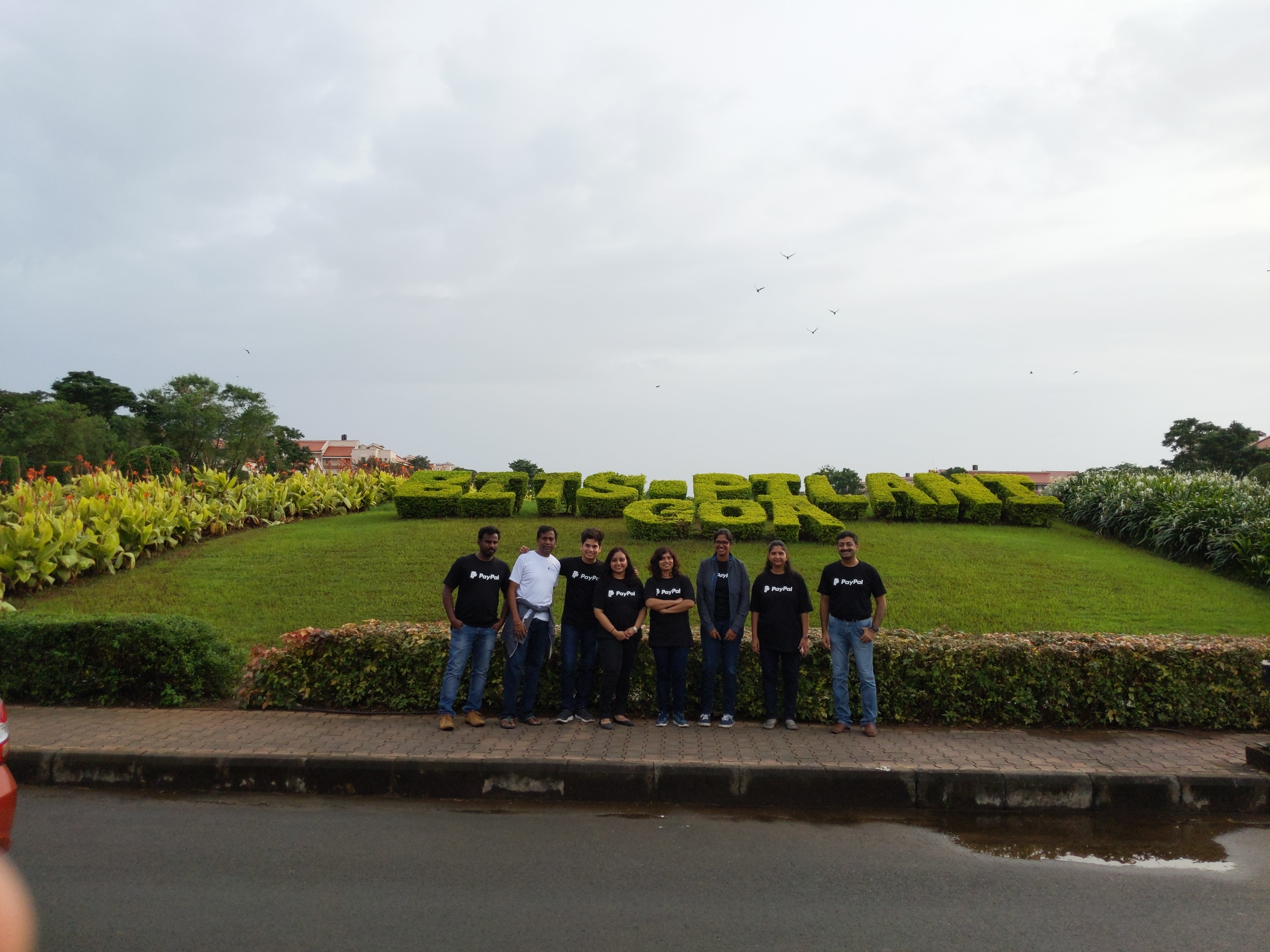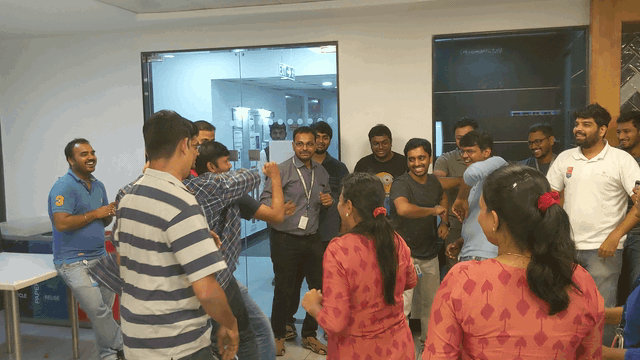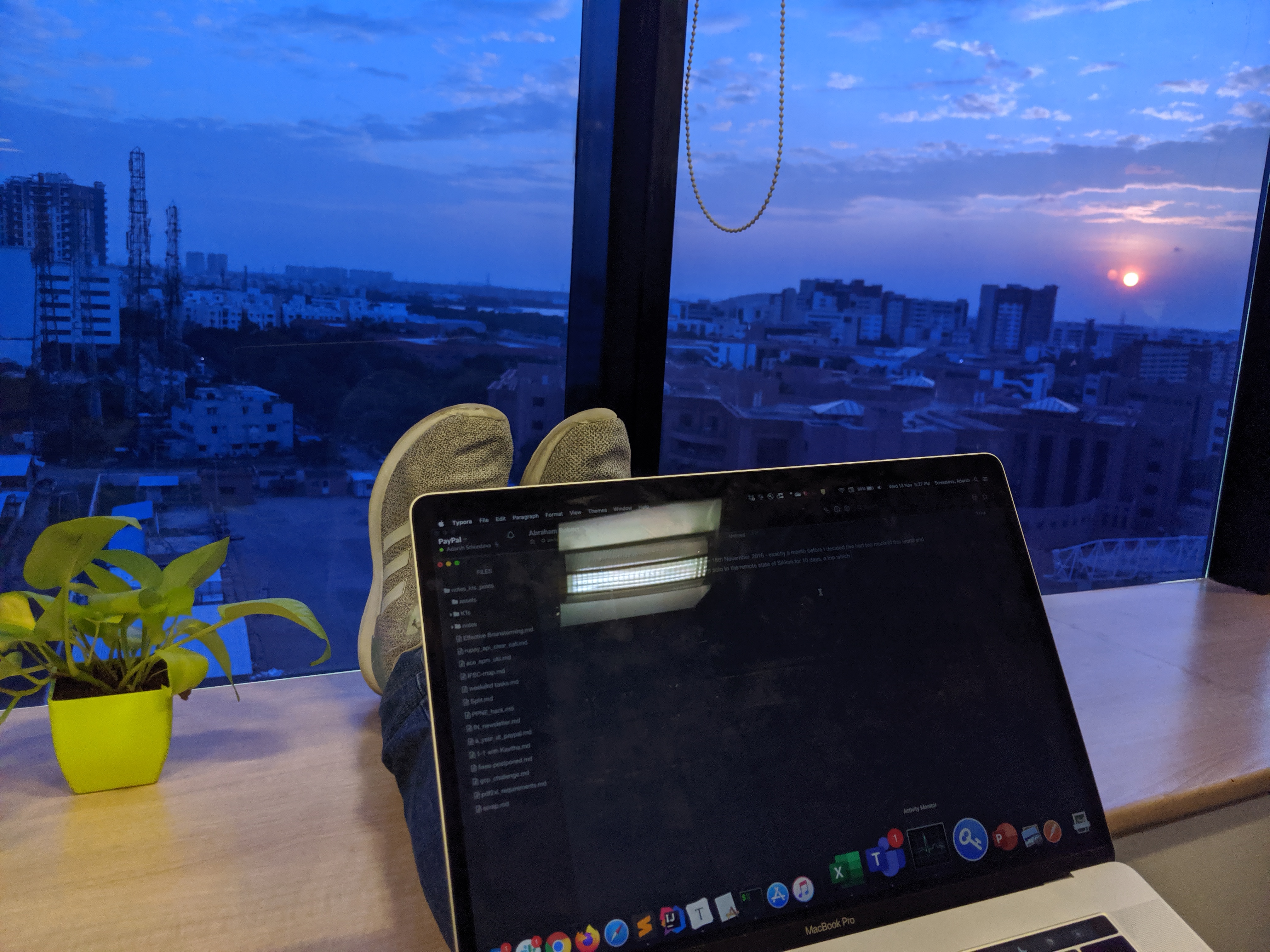This Monday, PayPal India hosted the 2020 batch of tech interns. Almost exactly 2 years ago, I was part of the 2018 intern cohort, and then in August 2018, I joined PayPal as a full-time engineer in the same team. I recently took some time to pen down how this journey has been, and how I feel about PayPal today.
I first talk about my team, then a bit about PayPal, and then finally about my journey here. Feel free to skip to the sections relevant to you.
What does my team do
I’m part of a group called the India Product Development team, and we are responsible for PayPal’s offerings in the Indian market. A small group of product and tech managers, an architect, and engineers - the team decides what features to bring to the market, designs it, executes it, and bug fixes it. This is perhaps a rare kind of group in the company- small and closely-knit, largely autonomous, owns the product in a complete market, and has an ambitious mandate. How big (or small) are we? We fit in the frame below:
 The next time you use PayPal in India, you can praise (or blame) one of these folks for your experience.
The next time you use PayPal in India, you can praise (or blame) one of these folks for your experience.
What’s working at PayPal like
While your mileage with any company will depend hugely on the team you join, there are of course a few common denominators. I’ll talk about three of them here for PayPal- work, tech, and culture.
First, the work. Payments is perhaps one of the most exciting and fast moving spaces around. As an engineer at PayPal, you’ll get to witness from inside out what it takes to build a payments system, the various regulatory, security, adoption and business aspects of it across highly varied markets, and how the wheels of innovation move in a space with highly interdependent partners. Technology can help financially include the poorest and the most remote into our economy, at a scale and speed nothing else can. Especially in markets like India, there are huge challenges and opportunities - you won’t be complaining about lack of problems to solve.
Whether you’re an app developer working on solving business problems using tech, a data analyst working on risk systems, or a core platform developer building for a massive and highly available app ecosystem, the impact of the work you do will be huge simply owing to the scale at which PayPal operates.
Second, the tech. PayPal is a payments company, and payments at its core involves passing messages from one guy to another, in a fast, secure and traceable manner. The tech exists to support that - we have a stack of frontend and backend services, messaging queues and daemons, batches, and mobile apps. There are data science and analytics teams, crunching out the data to develop risk capabilities and forecast business metrics. And then there are the core platform teams, that take care of dev tools, deployment processes and the sort. Most of the stack in PayPal today is modern, using Spring, node.js, React, and angular for its apps. Dev teams enjoy a good deal of independence with their working style, release cadence and coding practices.
Third, the culture. There is a great deal of focus on people - they are encouraged to take time off, pursue side hustles, and do whatever it takes to recharge themselves. There is a lot of openness and transparency too - you can question anyone on anything, and honest questions are generally met with honest answers. Paul Graham once wrote that you should be acutely aware of the things you can’t say in a group: at PayPal, I feel you can say practically anything, as long as you have a point and you put it respectfully. The workplace is vibrant and inspiring with some talk, event, or activity happening at all times. All of these things make it easy for people to thrive while having fun!
Lastly, a word on innovation. Last year, we had three major hackathons in Chennai and one major company-wide innovation tournament - with ideas (both business and tech) ranging from how to promote environmental sustainability through PayPal, to how we can extend the payments capabilities to the last segment of users. I think it’s safe to say that at PayPal, innovation and wild creativity are not just encouraged, but fostered and groomed. This is the aspect of PayPal that I have personally come to love the most.
My journey so far at PayPal
Within India PD, I am part of the backend team that focusses on the routing and settlement of the core transaction flow - where I in particular work on the component that validates and routes the payment. I also wrote and owned an app for merchant compliance reminders (“Hey, you’re x steps away from being able to receive money”), and have worked recently on a system which is used by downstream services in PayPal to recall static data like MCC codes, sort codes, card BIN properties, etc.
I was recently part of a project-on-steroids to introduce support for Rupay - India’s very own card scheme - into PayPal. Participating in integration discussions with partners, and working on key changes to some core payments components has given me a broad overview of how the payments systems of the world work, and slightly more focussed ideas of some of its aspects - such as 3DS authentication.
In pictures
I’m putting down some of my favorite snaps from my time at PayPal. I hope they tell you more about PayPal than my words could. Until my next post then! 👋
Recent college grads hazing the lovely Patrick, who used to lead our University Programs, at a party concluding our first month at PayPal.
 To my manager: We weren’t slacking off, our code was compiling!
To my manager: We weren’t slacking off, our code was compiling!
 Going back to my college as part of our hiring team. I shadowed senior engineers interviewing students, and it was a humbling experience to be on the other side of the same table I’d been a mere 2 years ago.
Going back to my college as part of our hiring team. I shadowed senior engineers interviewing students, and it was a humbling experience to be on the other side of the same table I’d been a mere 2 years ago.
 Async release celebration :p
Async release celebration :p
 My favorite nook for slacking off between work.
My favorite nook for slacking off between work.